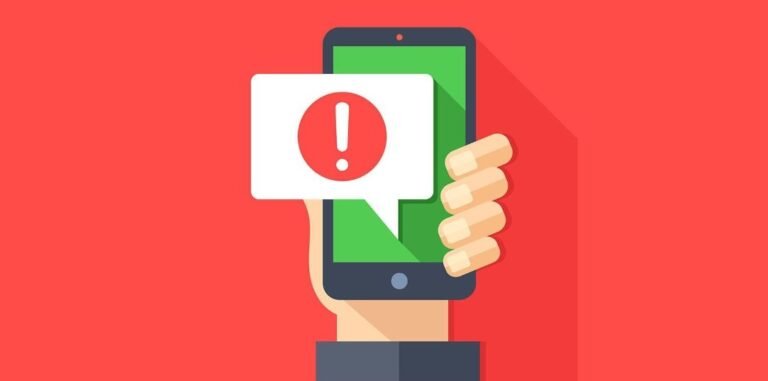Understanding the Landscape of Scam Phone Calls: A Comprehensive Guide

In an era where technology intertwines seamlessly with daily life, the sophistication and frequency of scam phone calls have escalated, posing a significant threat to individuals’ privacy and financial security. These unsolicited calls, ranging from the mildly annoying to the dangerously deceptive, exploit the ubiquity of smartphones and the trust we place in voice communication. As scammers employ increasingly cunning tactics to defraud unsuspecting victims, understanding the nature and variety of these fraudulent calls has never been more crucial.
Staying informed and vigilant against scam phone calls cannot be overstated. With scammers constantly devising new methods to deceive people, awareness and education are our first line of defence. Recognizing the signs of a scam call can prevent financial loss and protect personal information from falling into the wrong hands. This guide aims to arm readers with the knowledge needed to identify and avoid these deceptive practices, shedding light on the common types of scam calls, the tactics employed by scammers, and effective strategies for safeguarding oneself against these nefarious activities.
As we delve into the world of scam phone calls, it’s essential to remember that no one is immune to these attempts at deception. From older people to the tech-savvy, scammers target a wide range of individuals, making it imperative for everyone to stay alert and informed. By understanding the evolution of scam calls and their psychology, we can better protect ourselves and our loved ones from becoming victims of these fraudulent schemes.
The Evolution of Scam Phone Calls
The phenomenon of scam phone calls is not new, but the methods and technologies used by scammers have dramatically evolved over the years. Initially, scam calls were relatively straightforward, often involving simple schemes such as prize offers or fake charity requests. These calls relied on the scarcity of information available to the average person and the novelty of receiving unsolicited offers over the phone. The individuals behind these calls, who called with intentions to deceive, were often opportunistic fraudsters looking to exploit the public’s naivety.
However, as technology advanced, so did the tactics of scammers. The advent of the internet and caller ID spoofing technology marked a significant turning point. Scammers could now disguise their phone numbers, making it appear that calls were coming from legitimate companies, government agencies, or even a neighbour’s phone number. This technological leap made it increasingly difficult for individuals to distinguish between genuine and fraudulent calls, with the callers adeptly masquerading as trustworthy entities.
The proliferation of data breaches and the availability of personal information online have further fuelled the evolution of scam calls. Armed with detailed personal data, scammers can tailor their approaches to specific individuals, making their schemes more convincing. For example, by using a person’s name, address, or even social security number, these callers can create highly personalized and deceptive narratives, often pretending to be from reputable institutions or emergency services to elicit a sense of urgency and trust.
Moreover, the globalization of telecommunications has allowed scammers to operate from anywhere in the world, making it challenging for authorities to track and prosecute them. This international dimension has led to a surge in scam calls, with callers exploiting differences in laws and regulations across countries to evade justice. The anonymity provided by the internet and the ease of international calling has emboldened scammers, allowing them to reach victims across the globe with minimal risk.

Today, scam calls have diversified into myriad sophisticated schemes, including but not limited to IRS, tech support, and family emergency scams. The individuals behind these calls leverage psychological tactics such as fear, urgency, and authority to manipulate victims into making hasty decisions, often leading to financial loss or the compromise of personal information. These callers are increasingly professional and organized, operating in networks that span continents and employing constantly evolving tactics to stay one step ahead of law enforcement and public awareness.
Common Types of Scam Phone Calls
The IRS/CRA Tax Scam
Description and Recognition: Scammers impersonate tax officials from the Internal Revenue Service (IRS) in the U.S. or the Canada Revenue Agency (CRA) in Canada, claiming that the victim owes back taxes and must pay immediately to avoid arrest or other legal actions. These calls often instil fear and urgency, pressuring victims into making rash decisions.
Signs: Demand immediate payment through specific payment methods like gift cards, wire transfers, or cryptocurrencies. Legitimate tax agencies do not operate in this manner.
The Tech Support Scam
Description and Signs: This scam involves callers claiming to be from a well-known tech company, such as Microsoft or Apple, informing the victim that their computer is infected with a virus or experiencing a serious technical issue. The scammer then offers to fix the problem for a fee or attempts to gain remote access to the victim’s computer to steal sensitive information.
Signs: Unsolicited calls about computer issues and requests for remote access or service payment.
The Lottery or Prize Scam
Description and Recognition: Victims receive calls informing them that they’ve won a lottery, sweepstakes, or a prize in a contest they don’t recall entering. Victims must first pay taxes, fees, or other charges upfront to claim the winnings.
Signs: Requests for payment to claim a prize that seems too good to be true.
The Family Emergency Scam
Description and Prevention: Also known as the “grandparent scam,” this involves callers pretending to be a family member (often a grandchild) in distress, needing immediate financial assistance for an emergency, such as bail money or hospital bills. The scammer relies on the victim’s emotional response to bypass rational judgment.
Signs: Urgent requests for money, often accompanied by instructions not to tell other family members.
The Charity Scam
Description and Identification: Following natural disasters or during holiday seasons, scammers may pose as representatives from charitable organizations, soliciting donations for relief efforts or causes. These scams exploit the victim’s generosity and willingness to help.
Signs: High-pressure tactics, vague details about the organization or how the funds will be used, and requests for donations via cash, gift card, or wire transfer.

Protection Tips
Do Your Research: Verify the caller’s claims by contacting the organization directly through official channels.
Never Share Personal Information: Legitimate organizations will not ask for sensitive information like social security numbers or bank account details over unsolicited calls.
Use Call-Blocking Services: Many phone companies offer services or devices that can block scam calls.
Report Scam Calls: Reporting to authorities like the Federal Trade Commission (FTC) in the U.S. or the Canadian Anti-Fraud Centre can help combat these scams.
Awareness and caution are key in protecting oneself from scam phone calls. By recognizing the common types and understanding their tactics, individuals can significantly reduce their risk of falling victim to these fraudulent schemes.

Legal Recourse for Victims of Scam Calls
Contact Your Financial Institution: If you’ve provided financial information or made payments to a scammer, immediately contact your bank or credit card company to report the fraud and discuss options for securing your accounts and possibly recouping lost funds.
Report to Law Enforcement: While law enforcement may not always be able to recover lost money, reporting the scam is crucial. Provide all available information about the call, including the phone number, the call’s time, and the conversation’s content. This information can help in ongoing investigations and in developing strategies to combat these scams.
Consumer Protection Agencies: In many countries, consumer protection agencies offer resources and assistance to scam victims. For instance, in the United States, the Federal Trade Commission (FTC) allows individuals to report fraud, including scam calls, which helps them collect data to identify scam trends and advise the public.
Telecommunications Regulators: Reporting scam calls to your country’s telecommunications regulator can also be effective. These agencies, such as the Federal Communications Commission (FCC) in the U.S., can act against scam callers, including imposing fines and encouraging technology development to block scam calls.

Reporting Scam Calls: Where and Why
Federal Trade Commission (FTC): In the U.S., the FTC’s online reporting portal (ftc.gov/complaint) is a primary resource for reporting scam calls. The data collected helps the FTC track scam patterns and prosecute fraudsters.
Federal Communications Commission (FCC): The FCC accepts complaints about unwanted calls, including scam calls, through their website. Reporting here helps in the regulatory oversight of telecommunications and the implementation of measures to reduce scam calls.
Canadian Anti-Fraud Centre: This centre collects information on fraud and identity theft in Canada. Reports can be made online to assist law enforcement in identifying and prosecuting scammers.
Your Phone Company: Reporting scam calls to your phone service provider can help them take action to block scam numbers and offer you additional tools to protect against unwanted calls.
Local Law Enforcement: Although local police may have limited resources to pursue individual scam callers, reporting the scam provides valuable data and can help in larger investigations.
The Impact of Reporting
Reporting scam calls plays a critical role in combating these fraudulent activities. Each report contributes to a larger dataset that law enforcement and regulatory agencies use to identify patterns, track the activities of scammers, and develop strategies to prevent scams. Public awareness campaigns often draw on information gathered from these reports, helping educate the community about the risks of scam calls and how to avoid them.
Moreover, collective reporting can lead to policy changes and the implementation of new technologies designed to block scam calls. For example, the push for STIR/SHAKEN call authentication technology in the U.S. has been partly driven by the need to address the volume of scam calls reported by consumers.
Conclusion
Scam phone calls represent a significant challenge in our increasingly connected world, exploiting the convenience of instant communication to deceive and defraud. However, individuals can significantly reduce their risk of falling victim to these schemes by understanding the common types of scam calls, recognizing the signs of a scam, and knowing the steps to take if targeted.
The fight against scam calls is a collective effort that involves consumers, telecommunications companies, regulatory bodies, and law enforcement agencies. While technological advancements and regulatory measures are evolving to counteract these scams, individual vigilance and education remain indispensable.
As we move forward, staying informed about the latest scam tactics and protective measures, reporting scam calls, and supporting regulatory changes are crucial actions everyone can take. Together, we can create a more secure telecommunications environment, reducing the impact of scam calls on our lives.






